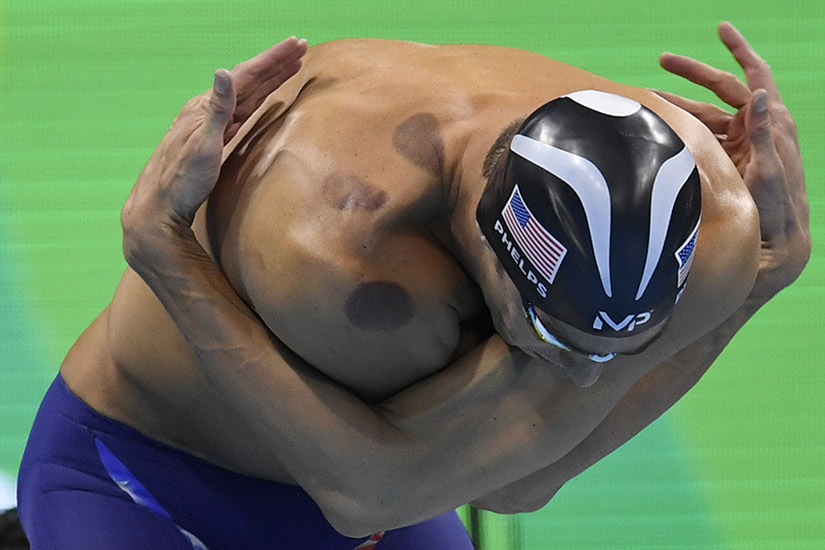Earlier this week, Michael Phelps swam his way to his first Olympic medal in Rio – the 4×100 meter freestyle relay – with large circular welts on his back and shoulders.
These circles, known as cupping, probably seem familiar: Gwyneth Paltrow was all up on this buzzy health trend as early as 2004. Of course, cupping pre-dates the Goop era by a millennium. It’s a staple in traditional Chinese medicine and involves the heating of a glass cup so it suctions to skin, pulling it into the cup. The act is thought to stimulate blood flow, detoxify the body and even relieve pain. “It’s like a reverse massage. Instead of pressing into the tissue, it is being pulled up,” says Jessica Zerr, an acupuncturist and kinesiologist who works at Vancouver’s Electra Health Floor Health and Wellness Clinic.
Why does cupping appeal to Olympians? Proponents say it can help athletes recover faster and even perform better. (We see you, gold medal.) “It helps deliver the nutrients necessary to repair an injured tissue or to help decrease muscle and joint pain after activity,” says Zerr. She adds that this procedure also stretches the fascia, which is the thin tissue surrounding our muscles. “If our fascia is not moving properly, these adhesions can create restrictions in range of motion and increase our risk of injury.”
Science isn’t completely sold. “While it has been around a long time, there is no good evidence that cupping works as promised,” says Timothy Caulfield, University of Alberta professor, and author of Is Gwyneth Paltrow Wrong about Everything? “There have been small studies, but I remain skeptical. Athletes are always looking for an edge, so you can’t discount the value of the placebo effect in this context. But it would be unfortunate if the profile of Olympic athletes provided inappropriate legitimization [of this trend]!”
If you do try cupping, Zerr suggests to always see an expert. “There are certain conditions where cupping is not appropriate and someone without proper training may not be aware of the potential harm.”






